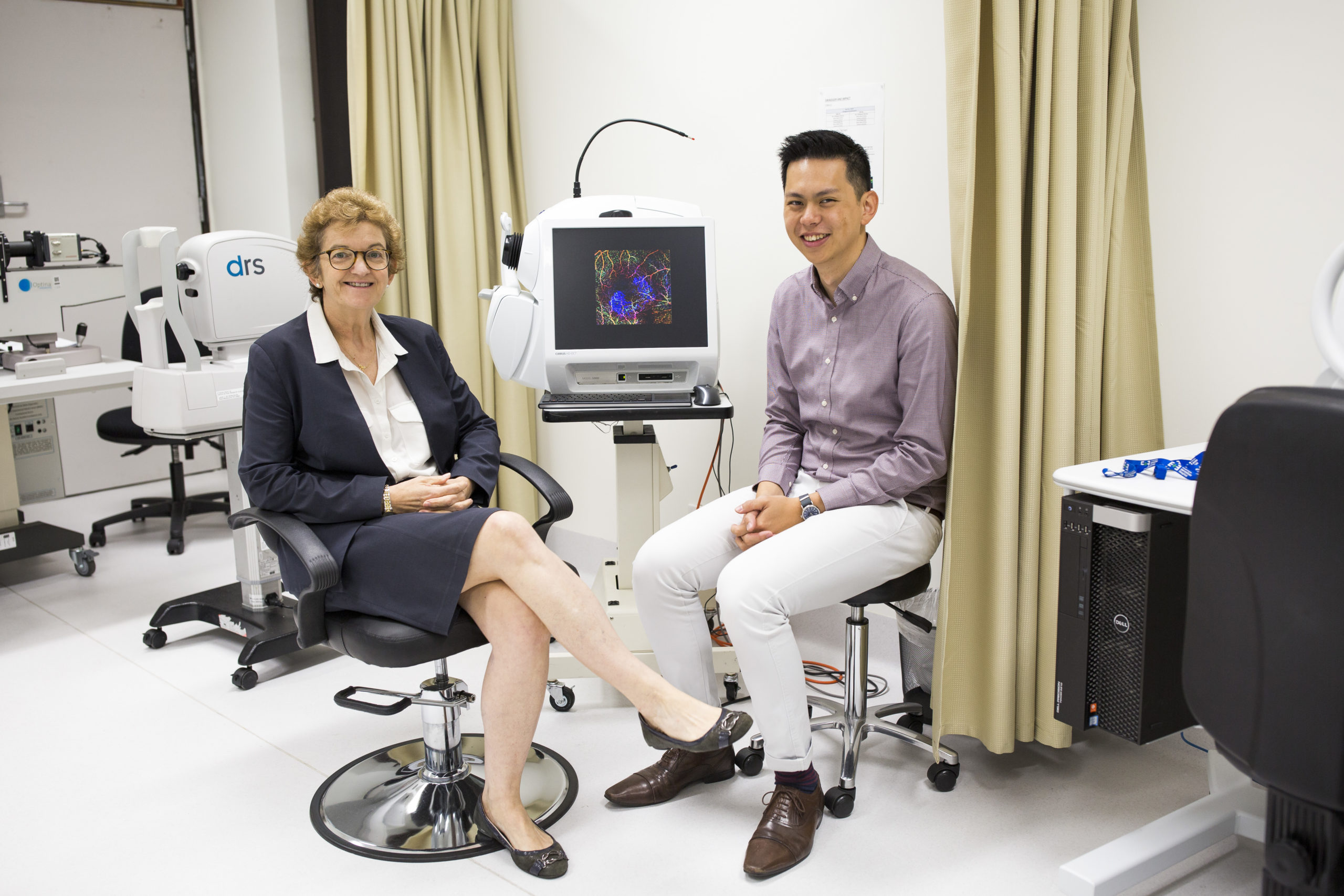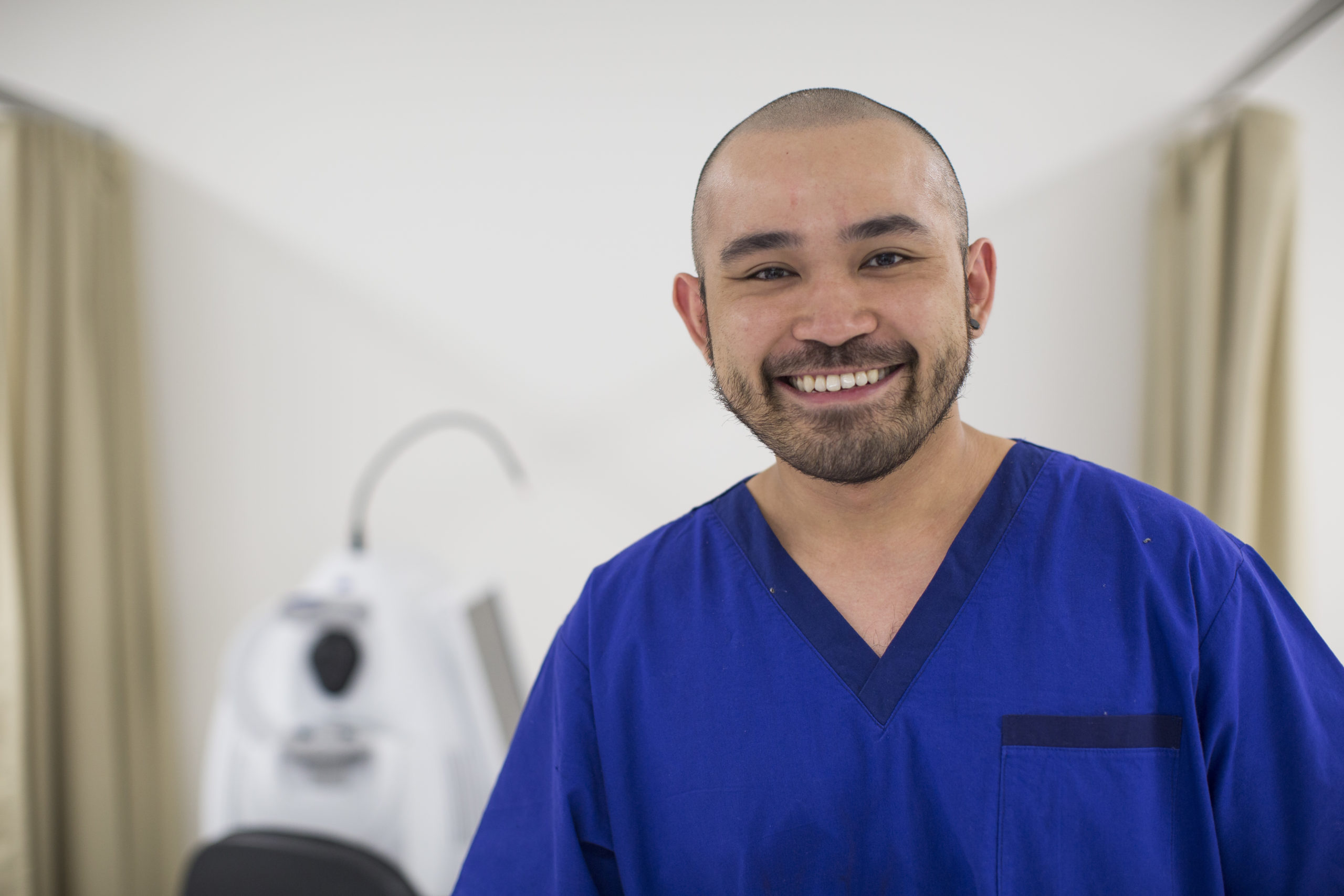NEWS
Pandemic progress
CERA’s macular researchers are rising to the challenge of advancing their research in the face of a global pandemic. Learn how the team is keeping its research progressing in uncertain times.
COVID-19 did not slow Professor Robyn Guymer AM and her team in 2020. She had to pivot but the CERA Deputy Director and Head of Macular Research enjoyed a productive year.
Professor Guymer continued to help coordinate her team’s Australian projects while completing a sabbatical year as a visiting professor with Hoffmann La-Roche, in Basel Switzerland where she worked as a Global Principal Medical Director.
Like many of her CERA colleagues, she continued to progress her research despite the constraints of the pandemic.
In 2020 she was invited to deliver the Macula Society’s prestigious W Richard Green Award and Lecture. Professor Guymer also won a National Health and Medical Research Council (NHMRC) Investigator Grant to fund her work for five more years.
This followed a $5 million NHMRC Synergy grant in 2019 to support research into the genetic and other causes of a subgroup of age-related macular degeneration which is associated with a higher risk of vision loss.
Professor Guymer is leading the Synergy work undertaken by several teams investigating the specific cause for this high-risk AMD phenotype which is characterised by deposits called reticular pseudodrusen (RPD).

Powering through a pandemic
CERA’s Macular Research Unit (MRU) is a world leader in describing the early changes in eyes with age-related macular degeneration (AMD), including the first signs of cell death in the retina and high-risk RPD deposits.
They are using this expertise to apply it to developing, with international colleagues, artificial intelligence (AI) algorithms that can detect changes in the retina that might predict who will have a progressive disease and who will not.
As part of the AI and the Synergy grant work, the team now has access to the UK Biobank, which has thousands of retinal scans to analyse using AI and the participants’ genotypes.
The Synergy grant united researchers from CERA, WEHI, and the University of Melbourne. Dr Carla Abbott took on the role of the project manager of this large project in 2020 and is working to invite several international groups to join.
“To find new genes that might be associated with RPD we need thousands of cases, which is why we need not only the international cohorts but also AI algorithms to run on the images of other cohorts, who don’t have the clinical information, to get the numbers we need,” Professor Guymer says.
Artificial intelligence
Two first-in-human trials, conducted by the MRU and sponsored by international companies, were put on hold in 2020 due to COVID-19.
Instead, team members used their time to learn new annotation skills to help contribute to their AI research.
“We continue to answer important research questions, but made use of the many thousands of images we already had collected of eyes with AMD,” says Professor Guymer.
“Virtually the entire MRU team upskilled in grading and annotating images to work on our artificial intelligence research. This is a very important step in the process of developing algorithms that will allow us to find markers in eyes that would increase the risk of progressing to vision loss.”
Shifting focus
An enforced delay in starting several human trials until 2021 allowed more focus on work that didn’t require our clinical researchers to physically see patients.
“It was actually a very productive year in terms of our research,” Professor Guymer says. “We were able to finish off projects, get our processes all streamlined, and learn new skills.
“We started working on many of our international collaborating agreements which need to be in place so that we’re ready to get going on doing our Synergy project in 2021,” Professor Guymer says.
“In addition, in 2020, despite COVID, we finished the five-year follow-up of the first trial of a novel Australian nanosecond laser treatment which aims to slow AMD progression. The results are currently in a manuscript under peer review.”

Incremental change
Professor Guymer has led the MRU since she established it in 1997 and oversees around 18 researchers and students, all seeking to prevent vision loss from AMD.
She has seen big improvements in the treatment of one form of late AMD, known as ‘wet AMD’, where vessels bleed and destroy the retina.
But there is still a great need to treat the disease early to stop or slow progression, and to be able to treat the other late vision-threatening complication which kills cells, known as ‘dry AMD’.
“The problem is that currently you have to wait until the disease is quite far down the track before you can intervene,” Professor Guymer says. “We’ve been trying, and have been quite successful, in identifying what are called early biomarkers that we hope will enable trials of new treatments to begin earlier in the disease process, before
irreversible damage occurs.”
The MRU also hopes to continue to develop a network of community-based optometrists who have a very important role to play in identifying and referring people with early stages of AMD into trials and other research projects.*
*This story first appeared in the CERA Annual Review for 2020.
